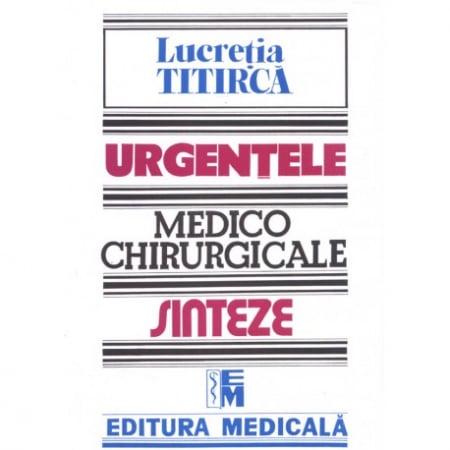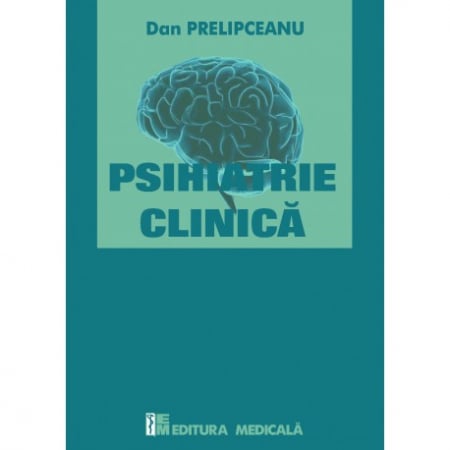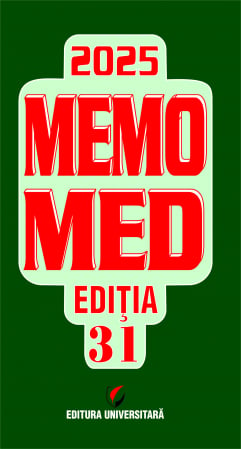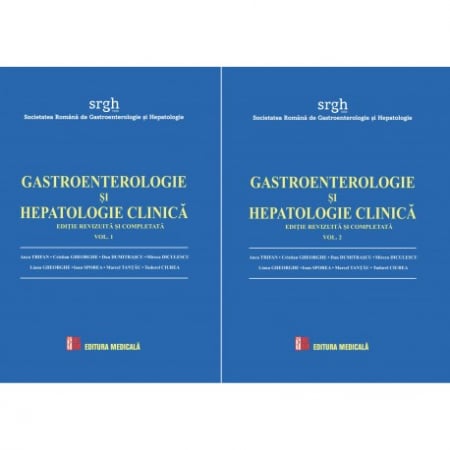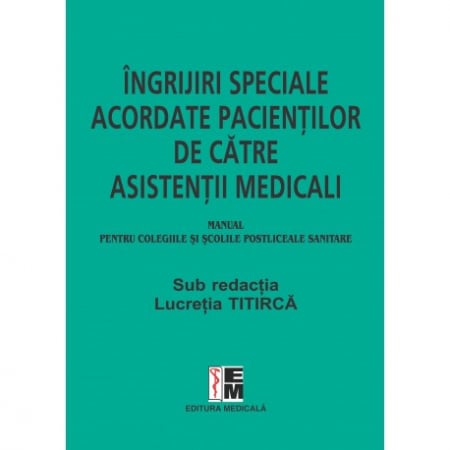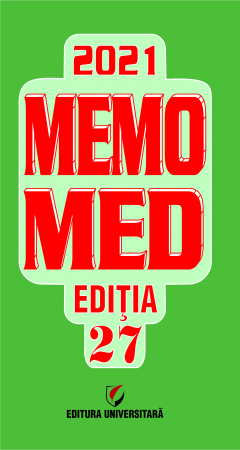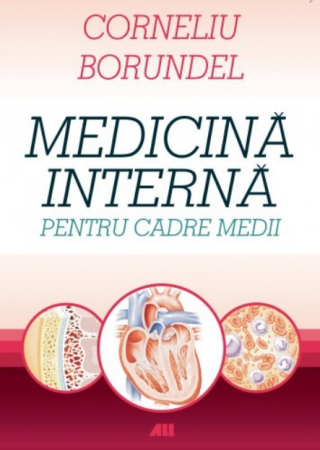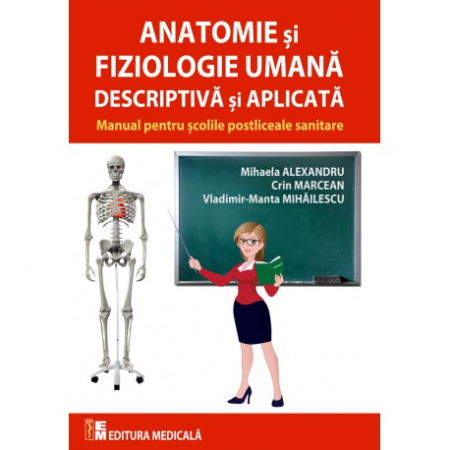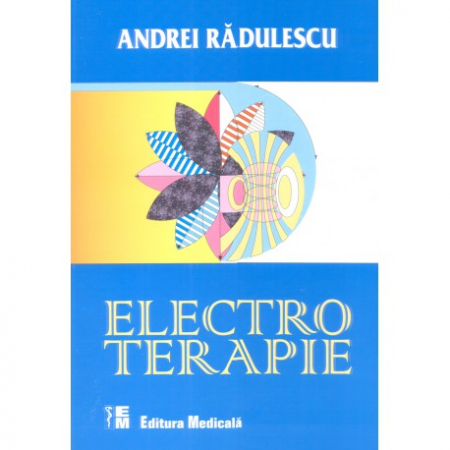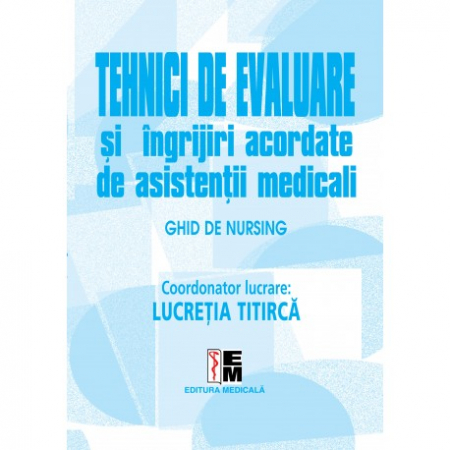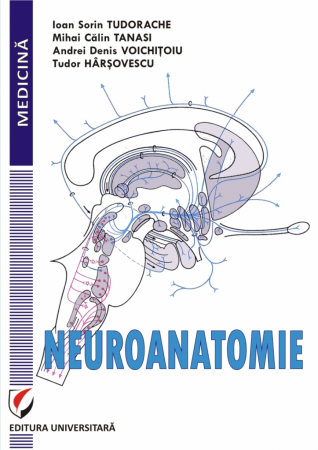ISBN: 978-606-591-049-2
Publisher year: 2011
Edition: I
Pages: 410
Publisher: Editura Universitară
Author: Coordonator - Prof. Dr. MSc. Alexandru Vlad Ciurea, Coordonator - Dr. Stefan Mircea Iencean, Conf. dr. Danil Adam, Prof. Dr. Silviu Albu, Dr. Zorinela Andrasoni, Dr. Felix Mircea Brehar, Prof. Dr. Ioan Stefan Florian, Conf. Dr. Cristina Ghervan, Prof. Dr. Radu Mircea Gorgan, Dr. Andrei Stefan Iencean, Atilla Kiss, Dr. Marian Mitrica, Conf. Dr. Dumitru Mohan, Dr. Aurelian Oslobanu, Dr. Sanda Florina Oslobanu, Dr. Bianca Pintea, Prof. Dr. Ion Poeata, Dr. Carmen Tascu, Alexandru Tascu
- Description
- Download (1)
- Authors
- Content
- More details
- Reviews (0)
We emphasize the contribution of the University Publishing House from Bucharest in the presentation of the best quality of the material, within a color edition that highlights the images that reveal the tumor pathology of the brain. The large number of carefully selected bibliographic indications for each chapter is another proof of the relevance of the text.
Finally, we consider that this editorial appearance represents an important moment for the neurosciences in our country, contributing significantly to the professional development of neurosurgeons and doctors of other specialties.
-
News in Intracranial Tumors
Download
Primary neurosurgeon, Doctor of Medicine, Associate Professor UMF "Carol Davila" Bucharest, Head of Neurosurgery, Emergency Clinical Hospital "St. Pantelimon ”Bucharest
Prof. Dr. Silviu ALBU
Discipline of ENT and Cervico-Facial Surgery, UMF “Iuliu Hatieganu” Cluj Napoca
Dr. Zorinela ANDRASONI
ATI primary physician, Clinical Department of Neurosurgery, Cluj-Napoca County Emergency Clinical Hospital
Dr. Felix Mircea BREHAR
Specialist neurosurgeon, Doctor of Medicine, Clinic I Neurosurgery, Emergency Clinical Hospital "Bagdasar-Arseni" Bucharest
Prof. Dr. Alexandru Vlad CIUREA
Primary neurosurgeon, Doctor of Medicine, University Professor UMF "Carol Davila" Bucharest, Full Member of the Academy of Medical Sciences, Member of the Romanian Academy of Scientists, 1st degree scientific researcher, Head of the First Neurosurgery Clinic, Emergency Clinical Hospital "Bagdasar -Arseni ”Bucharest
Prof. Dr. Ioan Stefan FLORIAN
Primary neurosurgeon, Doctor of Medicine, UMF University Professor "Iuliu Hatieganu" Cluj-Napoca, Head of the Neurosurgery Clinic, Cluj-Napoca County Emergency Clinical Hospital
Assoc. Prof. Dr. Cristina GHERVAN
Endocrinology Discipline, UMF “Iuliu Hatieganu” Cluj Napoca
Prof. Dr. Radu Mircea GORGAN
Primary neurosurgeon, Doctor of Medicine, University Professor UMF "Carol Davila" Bucharest, 4th Department of Neurosurgery, Clinic I Neurosurgery Emergency Clinical Hospital "Bagdasar-Arseni" Bucharest
Dr. Stefan Mircea IENCEAN
Primary neurosurgeon, Doctor of Medicine, Section II Neurosurgery, Emergency Clinical Hospital „Prof.Dr. Nicolae Oblu ”Iasi
Dr. Andrei Stefan IENCEAN
Resident neurosurgeon, Section III Neurosurgery, Emergency Clinical Hospital „Prof.Dr. Nicolae Oblu ”Iasi
Dr. Attila KISS
Resident neurosurgeon, Neurosurgery Clinical Department, Cluj Napoca County Emergency Clinical Hospital
Dr. Marian MITRICA
Primary neurosurgeon, Doctor of Medicine, Head of Neurosurgery, Central Military Hospital Bucharest
Assoc. Prof. Dr. Dumitru MOHAN
Primary neurosurgeon, Doctor of Medicine, Associate Professor, Faculty of Medicine and Pharmacy, Oradea, Head of the Neurosurgery Department, Oradea County Emergency Hospital
Dr. Aurel OSLOBANU
Specialist neurosurgeon, PhD student in Medical Sciences, University Assistant UMF "Iuliu Hatieganu" Cluj-Napoca, Clinical Section of Neurosurgery, County Emergency Clinical Hospital Cluj-Napoca
Dr. Sanda Florina OSLOBANU
Resident neurologist, Clinical Department of Neurosurgery, Cluj-Napoca County Emergency Clinical Hospital
Dr. Bianca PINTEA
Neurosurgeon specialist, Neurosurgery Clinical Department, Cluj-Napoca County Emergency Clinical Hospital
Prof. Dr. Ion POET
Primary neurosurgeon, Doctor of Medicine, University Professor UMF „Gr T Popa” Iasi, Head of section III Neurosurgery, Emergency Clinical Hospital „Prof.Dr. Nicolae Oblu ”Iasi
Dr. Alexandru TASCU
Primary neurosurgeon, Doctor of Medicine, Head of works UMF "Carol Davila" Bucharest, Clinic I Neurosurgery Emergency Clinical Hospital "Bagdasar-Arseni" Bucharest
Dr. Carmen TASCU
General Practitioner, Head of Nursery, Multifunctional Social Center "Pinocchio" Bucharest
Chapter I. CLASSIFICATION OF INTRACRANIAL TUMORS / 13
Prof. Dr. A.V. Ciurea, Dr. St. M. Iencean, Prof. Dr. I. Poeata
1. Definition / 13
2. Etiology / 13
3. Incident / 15
4. Classification of intracranial tumors / 17
5. Immunohistochemical and genetic characteristics of intracranial tumors / 22
Chapter II. MORPHOPATHOLOGY OF INTRACRANIAL TUMORS / 31
Prof. Dr. A.V. Ciurea, Dr. M. MitricA, Dr. A. St. Iencean
1. Intracranial glial tumors / 31
2. Tumors of choroid plexuses / 37
3. Neural and neuroglial tumors / 37
4. Tumors of the pineal region / 38
5. Embryonic tumors / 38
6. Tumors of cranial and peripheral nerves / 40
7. Meningiomas / 40
8. Germ cell tumors / 42
Chapter III. MOLECULAR PATHOLOGY AND GENETICS IN PRIMARY CEREBRAL TUMORS / 44
Dr. F. M. Brehar, Prof. Dr. A.V. Ciurea
1. Introduction / 44
2. Cell cycle and apoptosis / 45
3. The role of tyrosine kinase receptors in the control of cell proliferation / 52
3.1. Tyrosine kinase receptors / 53
3.1.1. Ras protein / 55
3.1.2. Phospholipase C-g (PL C-g) / 57
3.1.3. Phosphatidylinositol 3-kinase (PI 3-kinase) / 58
4. Molecular pathology of astrocytomas / 60
4.1. Disruption of the cell cycle and apoptosis / 60
4.2. Alteration of tyrosine kinase receptor function / 61
4.3. Alteration of the Ras / 62 protein signaling pathway
4.4. Alteration of the C-g Phospholipase signaling pathway (PL C-g) / 62
4.5. Alteration of the phosphatidylinositol 3-kinase (PI 3-kinase) signaling pathway / 63
4.6. Frequent genetic mutations in astrocytomas / 63
4.6.1. Pilocytic astrocytoma / 64
4.6.2. Pleiomorphic xantoastrocytoma / 65
4.6.3. Diffuse, infiltrative astrocytomas grade II / 65
4.6.4. Oligodendrogliomas / 65
4.6.5. Grade III, anaplastic astrocytomas / 66
4.6.6. Glioblastoma multiforme / 66
5. The role of tumor stem cells in glioblastoma oncogenesis / 67
6. Frequent genetic mutations in primitive neuroectodermal tumors (PNETs) / 70
6.1. Retinoblastoma / 70
6.2. Pineoblastoma / 71
6.3. Medulloblastoma / 71
7. Genetics of meningiomas / 72
8. Facomatoses / 74
8.1. Neurofibromatosis / 74
8.2. Bourneville disease. Subependymal astrocytoma with giant cells / 75
8.3. Hippel-Lindau disease / 76
Chapter IV. STEM CELLS AND TUMORIGENESIS / 84
Conf. Dr. D. Adam
1. Stem cells: nomenclature and characteristics / 84
2. Neural stem cells and neurogenesis / 87
3. Cancer stem cells / 93
4. New technologies for obtaining stem cells and the therapeutic implications of stem cells / 96
Chapter V. TUMOR INTRACRANIAL HYPERTENSION / 102
Dr. St. M. Iencean, Prof. Dr. A.V. Ciurea, Dr. A. St. Iencean
1. Introduction / 102
2. Mechanisms of increased intracranial pressure / 104
3. Mechanisms to compensate for the increase in intracranial pressure / 105
4. Pathogenesis of tumor intracranial hypertension / 107
5. Decompensation of tumor intracranial hypertension / 111
6. Clinical tumor intracranial hypertension / 115
7. Tumor intracranial hypertension with acute onset / 119
8. Tumor intracranial hypertension with progressive onset / 120
Chapter VI. SYMPTOMS OF INTRACRANIAL TUMORS / 123
Prof. Dr. A.V. Ciurea, Conf. Dr. D. Mohan, Dr. M. Mitrica
1. General presentation / 123
2. Symptoms due to tumor location / 125
3. Pathognomonic symptoms / 127
4. Symptoms due to intracranial hypertension / 128
5. Symptomatology related to tumor pathogenic characteristics / 130
Chapter VII. PARACLINICAL EXPLORATION / 133
Prof. Dr. I. Poeata, Dr. St. M. Iencean, Dr. A. St. Iencean
1. Generalities / 133
2. Ophthalmological examination / 133
3. Electroencephalography / 134
4. Cranial radiography / 134
5. Genetic and immunological diagnosis with tumor markers / 134
6. Cerebral scintigraphy / 134
7. Cerebral angiography / 135
8. Computer craniocerebral tomography / 135
9. Xenon CT scan / 136
10. Nuclear Magnetic Resonance (MRI) / 136
11. Positron emission tomography (PET) / 139
12. SPECT = single photon emission computed tomography or single photon emission computed tomography / 140
13. Intraoperative ultrasonography / 140
14. Brain biopsy / 140
Chapter VIII. PRINCIPLES OF MODERN TREATMENT IN INTRACRANIAL TUMORS / 143
Dr. St. M. Iencean, Prof. Dr. A.V. Ciurea, Prof. Dr. I. Poeata
1. General principles / 143
2. Surgical treatment / 144
3. Radiotherapy / 146
4. Chemotherapy / 147
5. New and experimental therapies / 147
Chapter IX. LOW MALIGNITY GLIOMAS / 152
Dr. St. M. Iencean, Prof. Dr. A.V. Ciurea, Prof. Dr. I. Poeata, Dr. A. St. Iencean
1. Epidemiological and histological characteristics / 152
2. Clinical features / 154
3. Imaging exploration and treatment of low grade gliomas / 160
Chapter X. HIGHLY MALIGNATIVE GLIOMAS / 169
Dr. St. M. Iencean, Prof. Dr. A.V. Ciurea, Prof. Dr. I. Poeata, Dr. A. St. Iencean
1. Classification of high grade gliomas / 169
2. Diagnosis of high grade gliomas / 171
3. Clinical features / 178
4. Treatment of gliomas with a high degree of malignancy / 180
Chapter XI. INTRACRANIAL MENINGIOOMAS / 185
Dr. St. M. Iencean, Prof. Dr. A.V. Ciurea
1. Classification / 185
2. Symptomatology / 191
3. Paraclinical exploration / 193
4. Treatment / 198
5. Topographic presentation and types of surgical approach / 199
6. Hemangiopericytoma / 202
Chapter XII. PYPHOPHYMAL ADENOMAS / 204
Prof. Dr. I. St. Florian, Conf. Dr. Cristina Ghervan, Prof. Dr. S. Albu
1. General considerations / 204
1.1. Epidemiology / 204
1.2. Classification of pituitary adenomas / 205
1.2.1. Secretive adenomas / 205
1.2.2. Non-secreting adenomas / 206
1.2.3. Neuroradiological classification / 206
2. Clinical picture in pituitary adenomas / 208
2.1. Pituitary tumor syndrome / 208
2.2. Hormonal hypersecretion syndromes / 210
2.2.1. Prolactinoma / 210
2.2.1.1. Clinical picture in hyperprolactinemia / 210
2.2.2. Acromegaly / 211
2.2.2.1. Dysmorphic syndrome / 212
2.2.2.2. Organomegaly / 213
2.2.2.3. Functional disorders / 213
2.2.3. Cushing's disease / 213
2.2.3.1. Facio-cervical-truncal obesity / 214
2.2.3.2. Skin lesions / 215
2.2.3.3. High blood pressure / 215
2.2.3.4. Glyco-regulatory disorder / 215
2.2.3.5. Amyotrophy / 216
2.2.3.6. Hetero-sexualization syndrome / 216
2.2.3.7. Osteoporosis / 216
2.2.3.8. Psychosyndrome / 217
2.2.4. Thyrotrophic adenoma / 217
2.2.5. Clinical dysfunctional adenoma / 217
2.2.6. Pituitary insufficiency / 218
2.2.7. Apoplexy pituitary / 218
3. Paraclinical diagnosis in pituitary adenomas / 221
3.1. Hormonal and biochemical diagnosis / 221
3.1.1. Biological diagnosis in prolactinoma / 221
3.1.2. Paraclinical diagnosis in acromegaly / 222
3.1.3. Paraclinical diagnosis in Cushing's disease / 223
3.1.4. Paraclinical diagnosis in TSH / 225-secreting adenoma
3.1.5. Paraclinical diagnosis of ophthalmic disorders / 225
3.2. Neuroradiological diagnosis / 227
3.3.1. Standard radiography / 227
3.3.2. Computed tomography (CT) / 227
3.2.3. Nuclear Magnetic Resonance (NMR) / 229
4. Therapeutic options in pituitary adenomas / 232
4.1. Surgical treatment of pituitary adenomas / 233
4.1.1. Establishing criteria for an optimal neurosurgical approach / 233
4.1.2. Intracranial approach to pituitary tumors / 234
4.1.2.1. Subfrontal approach / 235
4.1.2.2. Bifronto-pterional approach / 236
4.1.2.3. Pterional approach (fronto-temporal) / 239
4.1.2.4. Fronto-orbito-zygomatic approach / 240
4.1.2.5. Considerations on the intracranial approach / 241
4.1.3. Transfenoidal approach / 243
4.1.2.1. General considerations on the classical transfenoidal approach / 245
4.1.3.2. Endoscopic transfenoidal approach / 247
4.1.3.3. Considerations on the endoscopic approach / 248
5. Specific therapeutic indications / 250
5.1. Secretory adenomas / 250
5.1.1. STH / 250 secretory adenomas
5.1.2. ACTH / 252 secreting adenomas
5.1.3. PRL-secreting adenomas (Prolactinomas) / 254
6. Practical approach guide for the patient with pituitary adenoma / 258
Chapter XIII. TUMORS OF THE PINEAL REGION / 261
Dr. Alexandru Tascu, Prof. Dr. Alexandru Vlad Ciurea, Dr. Carmen Tascu
1. Introduction / 261
2. Classification of tumors of the pineal region / 262
3. Symptomatology / 264
4. Paraclinical explorations / 267
5. Treatment of tumors of the pineal region / 271
6. Evolution and prognosis / 277
Chapter XIV. VESTIBULAR SCHWANOMA / 282
Prof. Dr. Gorgan Radu Mircea
1. Introduction / 282
1.1. History / 283
2. Anatomopathology / 284
3. Epidemiology / 285
4. Clinical picture / 285
6. Differential diagnosis / 291
7. Treatment / 294
7.1. Conservative treatment / 295
7.2. Surgical treatment / 295
7.3. Intraoperative monitoring / 296
7.4. Translabyrinthine approach / 303
7.4.1. The approach of the middle cranial fossa / 304
7.5. Radiotherapy / 305
7.6. Fractional stereotactic radiotherapy / 307
8. Evolution and prognosis / 307
8.1. Conclusions / 308
Chapter XV. CEREBRAL TRUNK TUMORS / 311
Prof. Dr. I. St. Florian, Dr. Bianca Pintea
1. Generalities, historical / 311
2. Epidemiology / 312
3. Classification / 312
4. Pathology / 315
5. Clinical picture / 316
6. Paraclinical investigations / 317
7. Differential diagnosis / 318
8. Treatment / 318
9. Conclusions / 325
Chapter XVI. HINDQUARTERS TUMORS / 327
Prof. Dr. I. St. Florian, Dr. A. Oslobanu, Dr. Zorinela Andrasoni, Dr. Bianca Pintea, Dr. Sanda Florina Oslobanu, Dr. Kiss Attila
1. Introduction / 327
2. Imaging diagnosis of posterior fossa tumors / 327
3. Differential diagnosis of posterior fossa tumors / 330
4. Surgical treatment of posterior fossa tumors / 331
5. The main types of tumors found in medical practice / 336
Chapter XVII. CEREBRAL METASTASES / 371
Conf. Dr. D. Adam
1. Biology of metastases / 371
2. Epidemiological data / 378
3. Paraclinical diagnosis / 379
In the neural sciences, progress has been major, driven by the "brain decade", from the years 90-2000 in which enormous funds were allocated for the development of fundamental research of the nervous system and its pathologies. Neurosurgery is a relatively young surgical specialty with a history of about 80 years, promoted by the School of Neurosurgery developed by Harvey Cushing and continued by other illustrious masters of medicine.
With the impact of neuroimaging, neurosurgery has acquired completely different clinical and therapeutic values. Modern imaging techniques have expanded preoperatively and postoperatively, even intraoperatively, providing impressive images and essential details in the surgical procedure. Things went on and the imaging of the major nerve pathways in the brain was successfully imaged, including in the intracranial expansive processes. In addition angiography-4 vessels with all facilities (Angio-CT and other investigations) promoted a complex approach to intracranial tumors. Currently, such a tumor can no longer be discussed without having all the diagnostic data, neuroimaging, tumor markers, clinical and paraclinical data. All these have contributed to the development of therapies, treatments in intracranial tumors from a multimodal perspective (surgery, radiotherapy Gamma Knife Surgery, etc.). Neuronavigation, through the extremely precise location of the lesions and neuroendoscopy procedures have opened new horizons in treatment, in the normalization of obstructed fluid circulation and the approach to intraventricular pathological processes, actions inconceivable a decade ago.
Under these conditions, the appearance of this monograph is fully justified, the authors exposing all the novelty elements in the diagnosis and treatment of intracranial tumors, offering current concepts in the neurosurgical approach of primary and secondary intracranial tumors. The selected group of authors includes neurosurgeons with extensive experience in the main university centers in the country.
This monograph is addressed to neurosurgeons, neurologists, forensic medicine, intensive care, but also to any medical category interested in scientific progress. The paper involves a wide addressability for medical students because the data are clearly exposed, specifically for each topic, the content can be assimilated quickly and is accessible to the reader.
We emphasize the contribution of the University Publishing House from Bucharest in the presentation of the best quality of the material, within a color edition that highlights the images that reveal the tumor pathology of the brain. The large number of carefully selected bibliographic indications for each chapter is another proof of the relevance of the text.
Finally, we consider that this editorial appearance represents an important moment for the neurosciences in our country, contributing significantly to the professional development of neurosurgeons and doctors of other specialties.
Prof. Univ. Dr. Alexandru Constantinovici
Full Member of the Romanian Academy of Medical Sciences

6359.png)
![News in Intracranial Tumors [1] News in Intracranial Tumors [1]](https://gomagcdn.ro/domains/editurauniversitara.ro/files/product/large/actualiti-n-tumorile-intracraniene-2090-662382.jpg)
